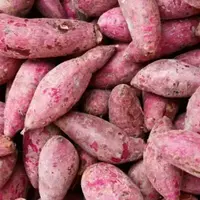





Sweet Potato Madura kizhangu
Product Description
"Madura Kizhangu" (മധുരക്കിഴങ്ങ്) is the Malayalam term for Sweet Potato. Despite its name, it's botanically distinct from the common potato ("Urula Kizhang") and is valued for its natural sweetness, vibrant colors, and significant nutritional benefits. It's a widely consumed root vegetable (though botanically a tuberous root) in Kerala and across India. ...Read More







